Recipe, pages 72-75.
This is a great party dish. Just don’t tell the kids they’re eating clams, mussels and snails.
I made this for a neighborhood barbecue — two large plates loaded with seafood — and everyone loved it. And liked the fennel in the seafood, a taste they’d not expected! It takes a couple of days to complete, but once you have all your mise ready, it assembles quickly.
Day One
Icefish
I couldn’t find any Icefish locally, so I looked for a similarly small fish and decided on a package of frozen baby Goby fish (family Gobiidae) at Vien Dong World Foods Supermarket. I thawed them out, rinsed and drained, then put them in a plastic container with some canola oil.
The baby goby fish came in a range of sizes, of which I used the larger. And the smallest? I fed to the kitchen help.

I found several fish commonly known as Icefish. Notothenioidei is from the frigid depths of the Antartic, and as such are “bloodless,” have very little hemoglobin.
The mackerel icefish (Champsocephalus gunnari) is a certified sustainable catch from the waters around Australia, and available through the Marine Stewardship Council.
The icefish, or noodlefish (Salangidae), is small enough to resemble that in the Alinea cookbook photos. They’re tiny little fish related to the smelt. They’re translucent. Cartilage instead of bones. Perfect for frying up to crunchy, bite-sized morsels! Unfortunately, also, very hard to find (read “nearly impossible”) in San Diego.
I thought of getting some fresh, local sardines from Elena Rivellino and Dennis Stein at Sea Rocket Bistro. But the local (and sustainable) sardines were a bit too big for the dish.
Sardine fishing off the coast of San Diego. Video courtesy of Sea Rocket Bistro
So, perusing my Local Asian markets, I settled on some baby Goby fish from Vietnam. Have no idea which of the thousands of species of goby they were, but they ended up being perfect for the dish.
Ingredients
Frozen baby Goby fish, from Vien Dong
Canola oil
Preserved Lemon
If you’ll remember a while back, I made a batch of Preserved Meyer Lemons. So for this dish, I took the container out of the freezer and removed a few.
Using a knife and a vegetable peeler, I removed just the yellow peel from the lemons, in as large pieces as I could. I trimmed off any remaining white pith.
Then cut them into squares (a bit smaller than half an inch). And reserved to a small plastic container.
Ingredients
Meyer lemons, from my tree
C&H cane sugar
Diamond Crystal kosher salt
Garlic Chips
This is the same component recipe used in DRY SHOT, Red Pepper, Garlic, Oregano. I peeled a large head of elephant garlic (Allium ampeloprasum). It’s an extremely large, milder flavored garlic, found easily in most supermarkets now. Then I measured out some skim milk.
Using my food slicer, I thinly sliced the cloves, then soaked in a bowl of skim milk.
Why soak garlic in milk? It removes the strong acids thus keeping the garlic flavor, but not the heat. This being an Alinea Restaurant recipe, we’re not done yet. Taking this a step further, let’s extract as much of the heat out of the garlic as we can.
I added some more skim milk and the garlic slices to a small saucepan and brought to a boil, then strained.
Boil. Strain. Repeat.
I put them on a tray in the dehydrator, sprinkled them lightly with some salt, and dehydrated at 140ºF for about 3 hours, until they crisped up. Then reserved to a covered plastic container in my prep area.
Ingredients
Head elephant garlic, from Henry’s Farmers Market
Organic Valley skim milk, from Whole Foods
Diamond Crystal kosher salt
Dried Horseradish Root
I bought some fresh horseradish root at Whole Foods for this and the horseradish cream component recipe. First I peeled it then cut up into half-inch by 3-inch planks. Using my food slicer, I cut it into slices a little less an eighth of an inch thick.
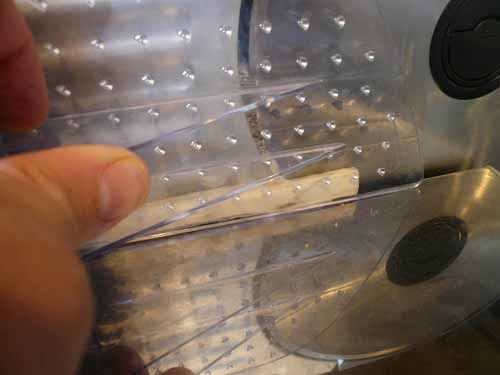
I dehydrated the horseradish slices (along with the onion slices from the component recipe below) for about four hours at 125ºF. And reserved in a plastic container.
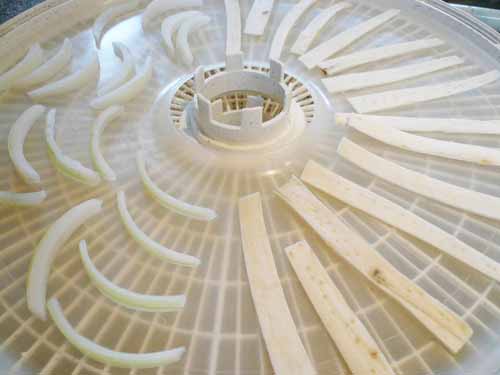
Fresh horseradish root, peeled, and grated.
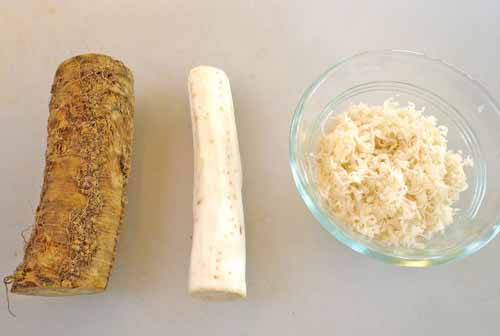
Then I grated up some with my Microplane grater, and reserved in a plastic container in the fridge.

Note to self: Always use the heavy-duty, metal Microplane. Not the cheesy plastic one.
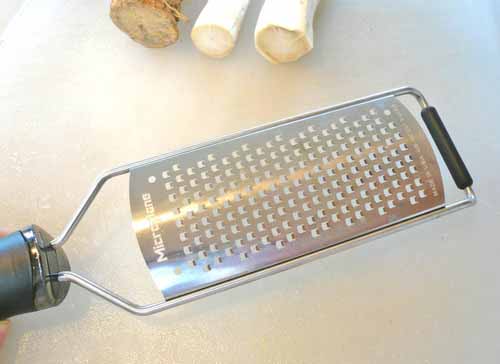
Or you’ll suffer the consequences of that heavy Lindsay hand…

Ingredients
Fresh horseradish root
Dried Onion
I peeled and halved a fresh yellow onion.
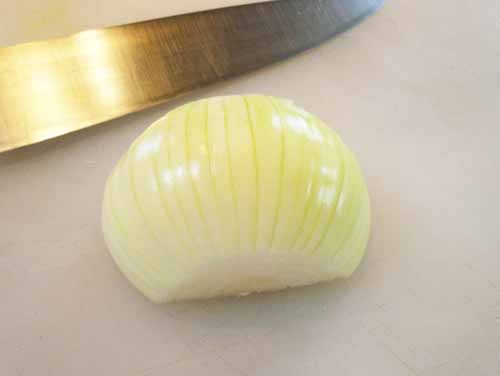
Then took several layers off and cut them into one-eighth inch thick pieces. I dehydrated the slices (along with the horseradish slices from the component recipe above) for about three hours at 125ºF. And reserved in a plastic container.

Ingredients
Fresh yellow or white onion
Dried Cornichons
What’s a cornichon (KOR-ni-shawn)? It’s just the French word for a very tiny pickle. A baby gherkin, pickled. I’ve bought them from Mideast markets and other specialty shops. And some are better than others. The kind I like the best are simply pickled in vinegar with a minimum of spices. (No sugar or bay in the pickles for me!)
I sliced the cornichons into flat planks, cutting off their rounded sides. Once these dried, their shapes resembled the flattened planks of horseradish and onion.
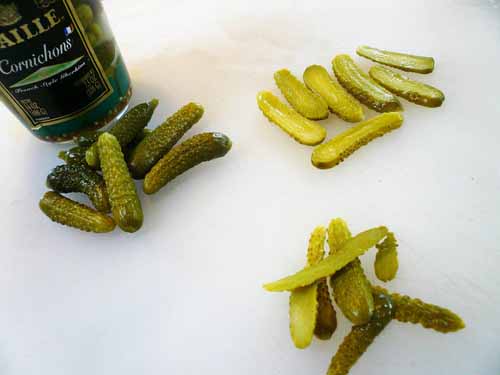
Then dehydrated for about three hours at 125ºF. And reserved in a plastic container.
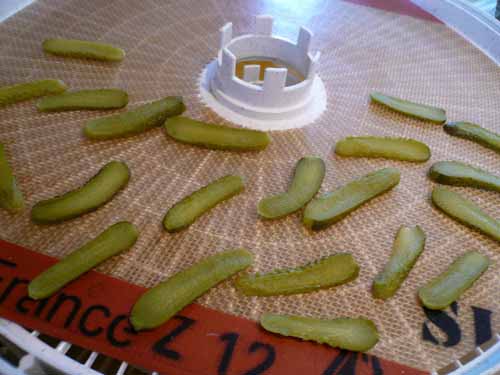
Ingredients
Maille French cornichons
Fried Capers
This is the same component recipe used in CROQUETTE, Smoked Steelhead Roe, Endive, Radish. I rinsed, drained and dried some STAR brand bottled capers.
Then fried in canola oil. Beware, they will pop if still too damp.
I drained them on several layers of paper towels, and reserved in an airtight plastic container.
Ingredients
Pot of canola oil for frying
STAR brand capers, rinsed, drained and dried
Fried Potato Chips
The book says to trim some Yukon gold potatoes into one-by-three inch ovals. I found a bag of baby Yukons the perfect size at my local grocer, so I just peeled and used them instead. I cut them up on my food slicer.
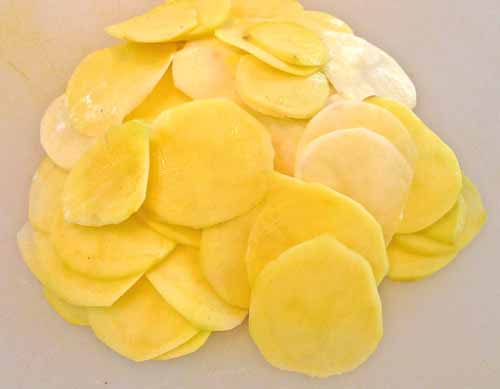
Then I clarified some butter, skimming off its fats and salts until I had a pot of clear yellow liquid butter. Mmmm.
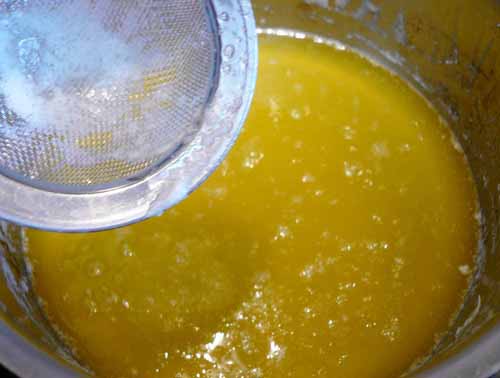
I heated it up to 275ºF and fried the potato slices in batches until golden brown.
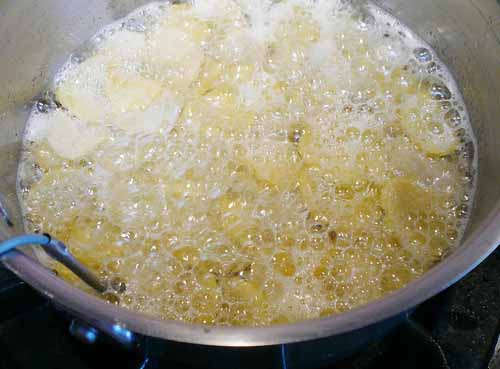
Removed to drain on a double layer of paper towels.
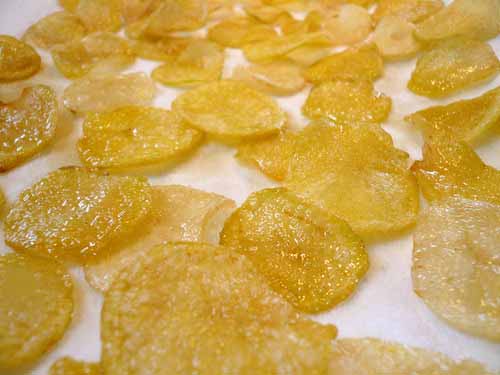
Then added to the dehydrator on a layer of paper towels at 125ºF for about three hours. I replaced the paper towels a couple of times as they’d soaked up quite a bit of butter. This dried out any remaining oils and crisped up the chips nicely. I put them into an airtight plastic container for the next day’s party.
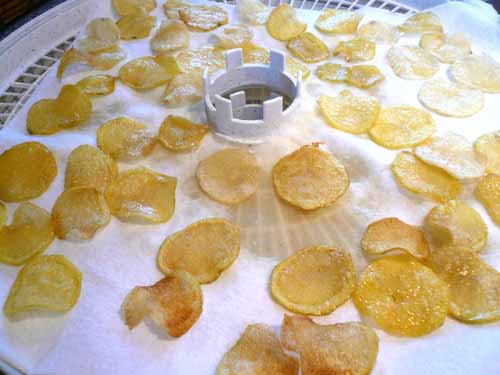
Note: You can dehydrate the horseradish, onion, cornichons and potato chips all at the same time and temperature.
To Be Continued
Ingredients
Baby Yukon gold potatoes
Challenge unsalted butter, clarified
Diamond Crystal kosher salt

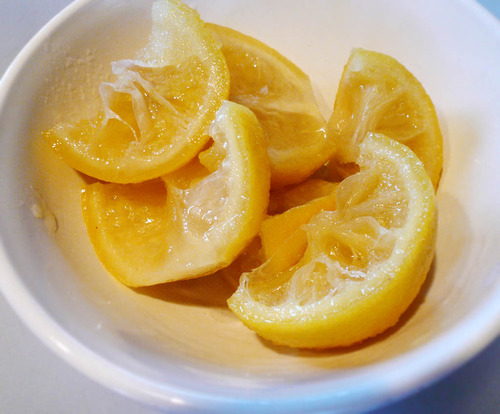
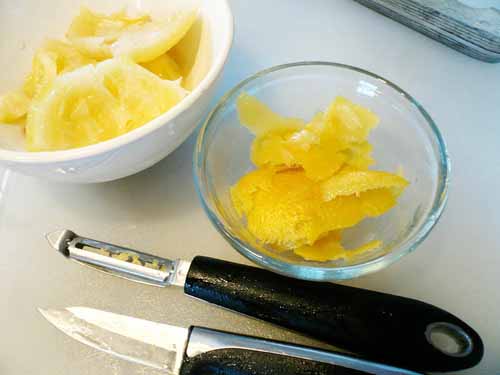
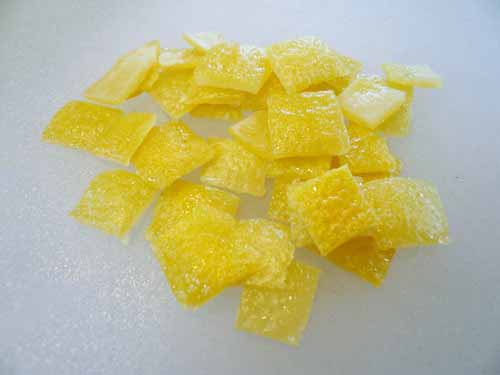

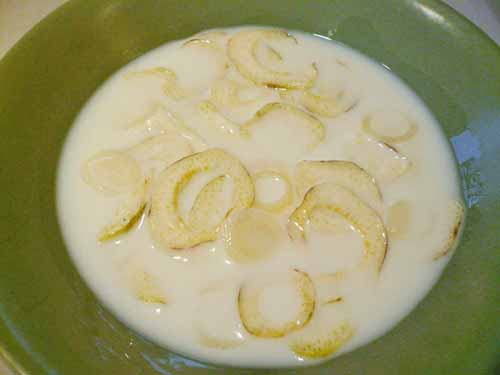
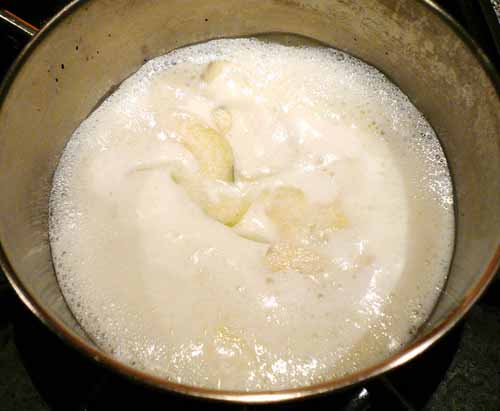
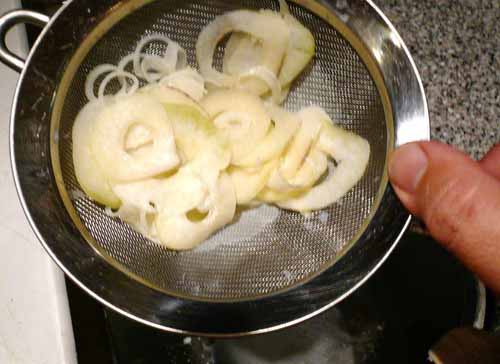

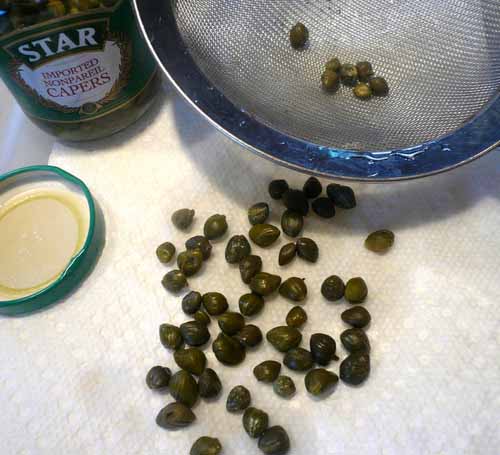

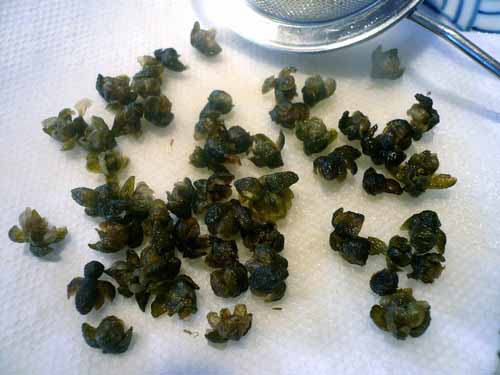
One Response to ICEFISH, Horseradish, Asparagus, Shellfish (Part One)